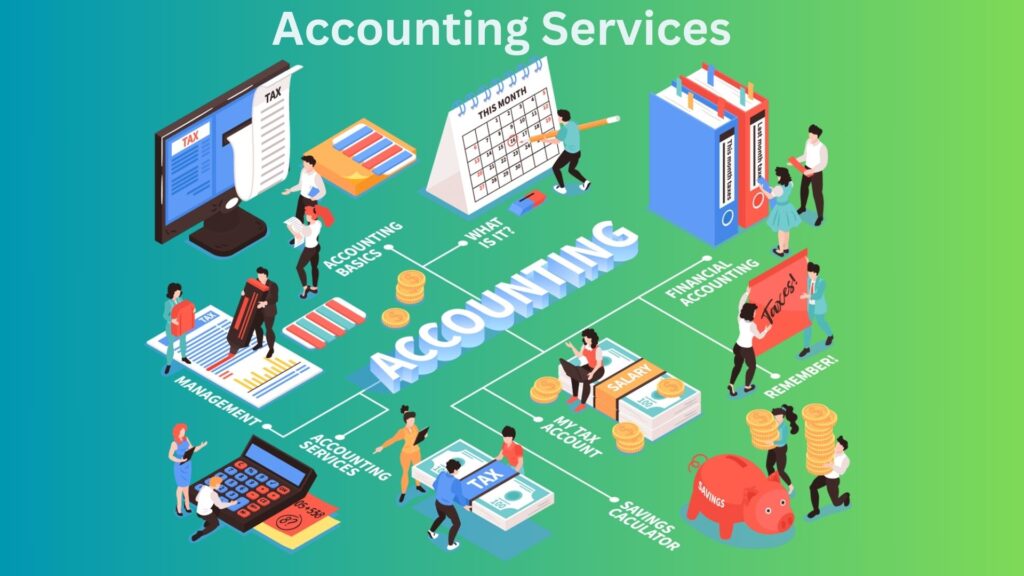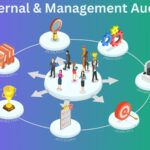Setting up an accounting system for your small business is a foundational step towards financial health and informed decision-making. It might seem daunting at first, but breaking it down into manageable steps makes it achievable. Let’s walk through setting up a system that works for your small business.
1. Understand Why You Need an Accounting System (It’s More Than Just Taxes!)
Before diving into the “how-to,” let’s quickly highlight the “why.” A good accounting system helps you:
- Attract Investors or Loans: Well-organized financial records build credibility and are often required when seeking funding.
- Track Your Business Performance: See where your money is coming from and going, identify profitable areas, and spot potential problems early.
- Make Informed Decisions: Based on accurate financial data, you can make better choices about pricing, expenses, investments, and growth strategies.
- Manage Cash Flow: Understand your incoming and outgoing cash to ensure you have enough to operate smoothly and meet financial obligations.
- Prepare for Taxes: Accurate records make tax preparation much easier and reduce the risk of errors and penalties.
2. Choose the Right Accounting System for Your Business Size and Complexity
There are several ways to approach accounting. Consider these options:
- Manual Accounting (Spreadsheets or Ledger Books):
- Best for: Very small businesses with very simple transactions and limited volume. Startups in the initial phases.
- Pros: Low or no initial cost (if you already have spreadsheet software), simple to start.
- Cons: Time-consuming, prone to errors, difficult to scale as you grow, limited reporting capabilities, can be messy to manage over time, no automation.
- Example: Using Excel or Google Sheets to track income and expenses in simple tables.
- Accounting Software – Basic/Cloud-Based:
- Best for: Most small to medium-sized businesses. Businesses that want accessibility and automation.
- Pros: Automates tasks (invoicing, bank reconciliation, reporting), more accurate than manual systems, scalable, often cloud-based for accessibility from anywhere, provides valuable reports and insights, often affordable monthly subscriptions.
- Cons: Monthly cost, initial setup and learning curve (though most are user-friendly), can have features you don’t initially need.
- Examples (Popular Options):
- Cloud-based (often beginner-friendly):Xero, QuickBooks Online, FreshBooks, Wave (some free options).
- Desktop (one-time purchase, can be cloud-hosted): QuickBooks Desktop.
- Accounting Software – More Advanced/Enterprise Level:
- Best for: Larger small businesses, businesses with more complex inventory, payroll, or multi-location needs, businesses expecting rapid growth.
- Pros: Highly customizable, robust features for inventory management, payroll, advanced reporting, multi-user access, often integrates with other business systems.
- Cons: Higher cost, steeper learning curve, may require more technical expertise to implement and manage.
- Examples: NetSuite, Sage Intacct, Microsoft Dynamics 365 Business Central, Accounts Robo ERP.
For most small businesses just starting out, a cloud-based accounting software solution is often the sweet spot – offering a balance of affordability, ease of use, and powerful features.
3. Key Steps to Set Up Your Accounting System (Regardless of Method)
These steps are crucial whether you’re using spreadsheets or accounting software.
Action: Even if you plan to manage day-to-day bookkeeping yourself, consider a consultation with an accountant or bookkeeper to set things up correctly and get initial guidance.
Step 1: Choose Your Accounting Method: Cash vs. Accrual
- Cash Accounting: Recognize revenue when you receive cash and expenses when you pay cash. Simple and straightforward, often suitable for very small businesses.
- Accrual Accounting: Recognize revenue when it’s earned (even if cash isn’t received yet) and expenses when they are incurred (even if not yet paid). More accurate picture of financial performance, especially for businesses with inventory, credit sales, or long-term projects. Generally recommended as you grow.
- Decision: For most small businesses aiming for growth, accrual accounting is the better long-term choice for a more accurate financial picture. However, cash accounting can be simpler to start with and transition later. Consult a professional if unsure.
Step 2: Open a Dedicated Business Bank Account (Essential!)
- Why: Separates your personal and business finances, making accounting and tax preparation much easier. It also looks more professional to clients and vendors.
- Action: Open a business checking and potentially a business savings account at a bank.
Step 3: Set Up Your Chart of Accounts (Your Financial Categories)
- What is it? A list of all the accounts you will use to categorize your financial transactions. Think of it like the “folders” in your filing system.
- Common Categories (Examples):
- Assets: Cash, Bank Accounts, Accounts Receivable (money owed to you), Equipment, Inventory (if applicable).
- Liabilities: Accounts Payable (money you owe), Loans, Credit Cards.
- Equity: Owner’s Equity, Retained Earnings.
- Revenue: Sales Revenue (by product/service category if needed), Service Revenue, Interest Income.
- Cost of Goods Sold (COGS) (if applicable): Direct costs related to producing goods for sale (materials, direct labor).
- Expenses: Rent, Utilities, Salaries, Marketing, Office Supplies, Travel, Depreciation, Insurance.
- Action: Customize a standard chart of accounts template (many accounting software programs provide this). Tailor it to your specific business needs. Don’t overcomplicate it starting out, but ensure you have the key categories you need.
Step 4: Establish Your Bookkeeping Processes (Recording Transactions)
- Frequency: At least weekly, ideally daily or every few days for better cash flow visibility.
- Process should include:
- Gathering Source Documents: Invoices (for sales), receipts (for expenses), bank statements, loan documents, etc.
- Recording Transactions: Entering each financial transaction into your chosen system (spreadsheet or software). Accurate dates, amounts, descriptions, and correct account categorization are crucial.
- Invoicing Customers: Create and send professional invoices promptly. Track invoice payments.
- Managing Expenses: Track all business expenses, keep receipts (digital or physical). Categorize expenses correctly for tax deductions and analysis.
- Payroll (if applicable): Set up payroll processes to pay employees accurately and on time, including tax withholdings and filings. (Accounting software often has payroll modules or integrations).
- Inventory Management (if applicable): If you sell physical products, set up a system to track inventory levels to manage stock and COGS effectively. (Software is almost essential for inventory).
Step 5: Regularly Reconcile Your Bank Accounts
- What: Matching your bank statement balance to your accounting system balance for your bank accounts. Identifies errors or missed transactions in either your records or the bank’s.
- Frequency: At least monthly.
- Action: Use your bank statements and your accounting system’s reconciliation feature (software makes this easy). Investigate and correct any discrepancies.
Step 6: Generate and Review Key Financial Reports (Regularly!)
Essential Reports:
- Profit & Loss (Income Statement): Shows your revenue, expenses, and profit (or loss) over a period (month, quarter, year).
- Balance Sheet: A snapshot at a point in time showing your assets, liabilities, and equity. Shows your company’s financial position.
- Cash Flow Statement: Tracks the movement of cash into and out of your business over a period. Crucial for cash management.
- Accounts Receivable Aging Report: Shows outstanding invoices and how long they are overdue – helps manage collections.
- Frequency: Review at least monthly, ideally more frequently for cash flow and sales tracking.
- Action: Learn to run and understand these reports within your chosen system. Use them to analyze performance and make business decisions.
Step 7: Consider Professional Help (Especially Early On)
Accountant/Bookkeeper:
- When to Consider: Setting up your initial system, needing help choosing software, feeling overwhelmed, complex business structure, preparing for taxes, wanting expert financial advice.
- Benefits: Expert setup, accurate bookkeeping, tax compliance, valuable financial insights, frees up your time to focus on your business.
- Action: Even if you plan to manage day-to-day bookkeeping yourself, consider a consultation with an accountant or bookkeeper to set things up correctly and get initial guidance.
4. Tips for a Successful Accounting System
- Be Consistent: Record transactions regularly and follow your established processes. Consistency is key to accurate data.
- Keep Excellent Records: Maintain organized files of all source documents (invoices, receipts, bank statements, etc.). Digital copies are recommended (cloud storage).
- Be Accurate: Double-check your entries, especially amounts and account categorizations. Accuracy is paramount.
- Use Automation Where Possible: Leverage software features for automation – bank feeds, invoice generation, automated reports, etc. It saves time and reduces errors.
- Regularly Review and Analyze: Don’t just collect data—use it! Regularly review your reports to understand your business’s financial health and make informed decisions.
- Adapt as You Grow: Your accounting needs will evolve as your business grows. Periodically reassess your system and be prepared to upgrade or adjust your processes as needed.
- Don’t Be Afraid to Ask for Help: Accounting can be complex. Don’t hesitate to reach out to an accountant, bookkeeper, or software support if you get stuck or have questions.
Conclusion
Setting up a good accounting system is an investment in your business’s future. Start simple, choose a system appropriate for your needs, be consistent, and leverage the power of financial data to guide your business towards success!




You actually make it seem so easy with your presentation but I find this matter to be actually something that I think I would never understand. It seems too complex and very broad for me. I am looking forward for your next post, I’ll try to get the hang of it!
Regards for helping out, excellent information. “If at first you don’t succeed, find out if the loser gets anything.” by Bill Lyon.